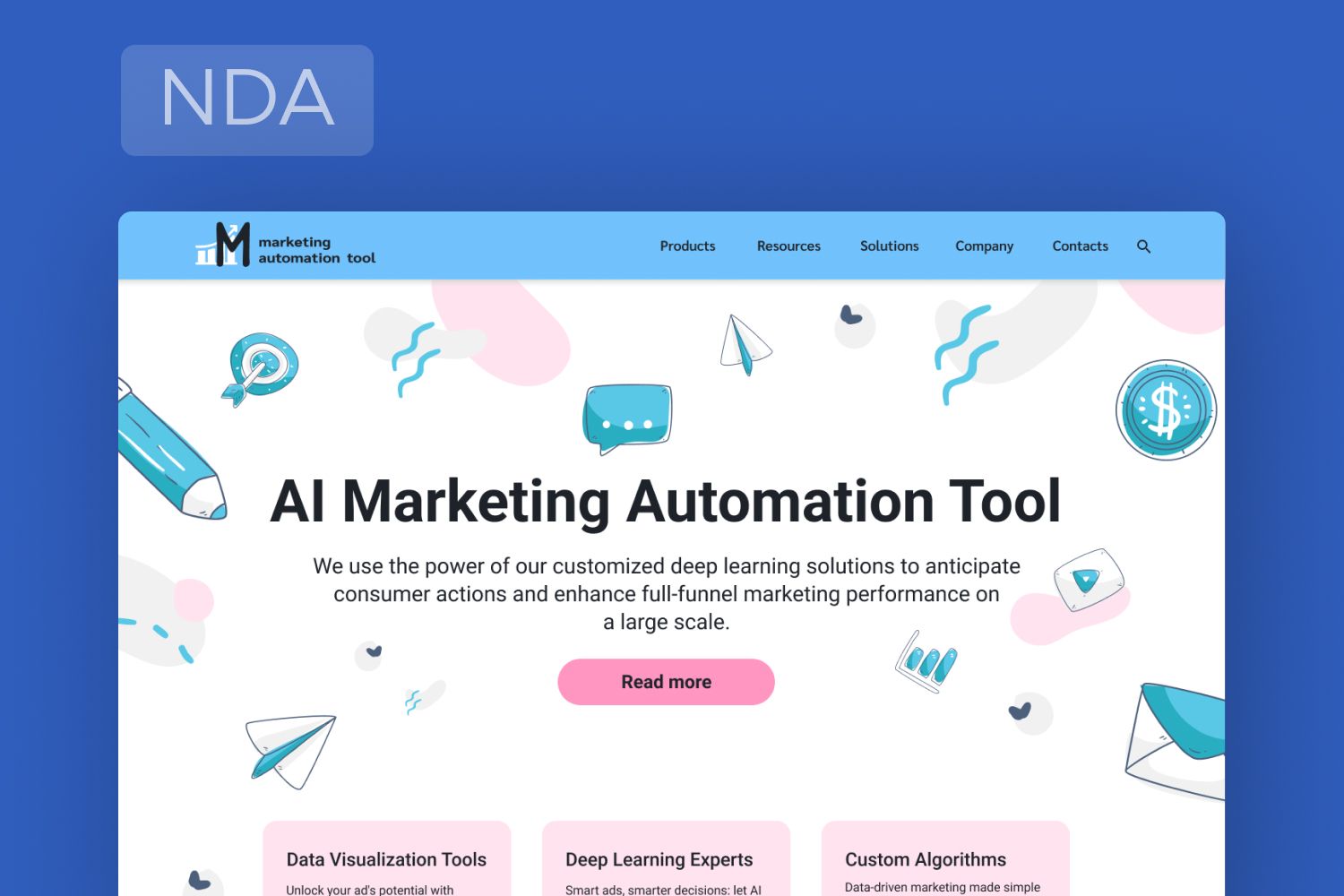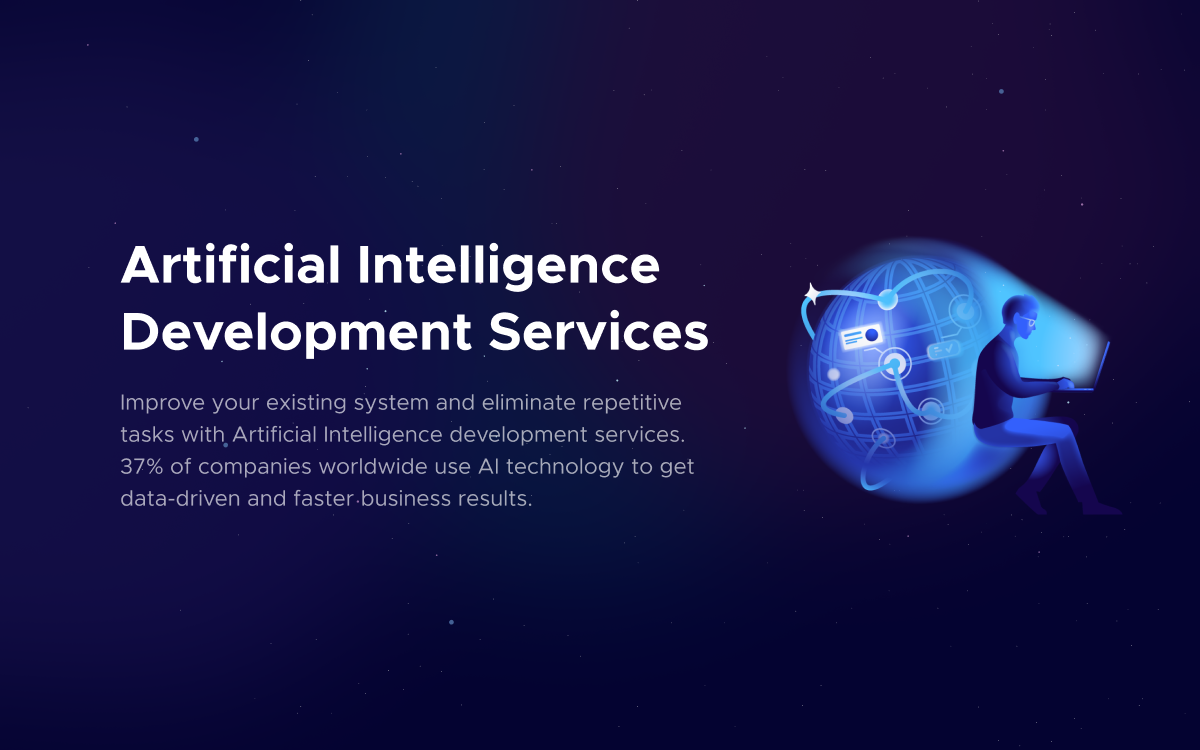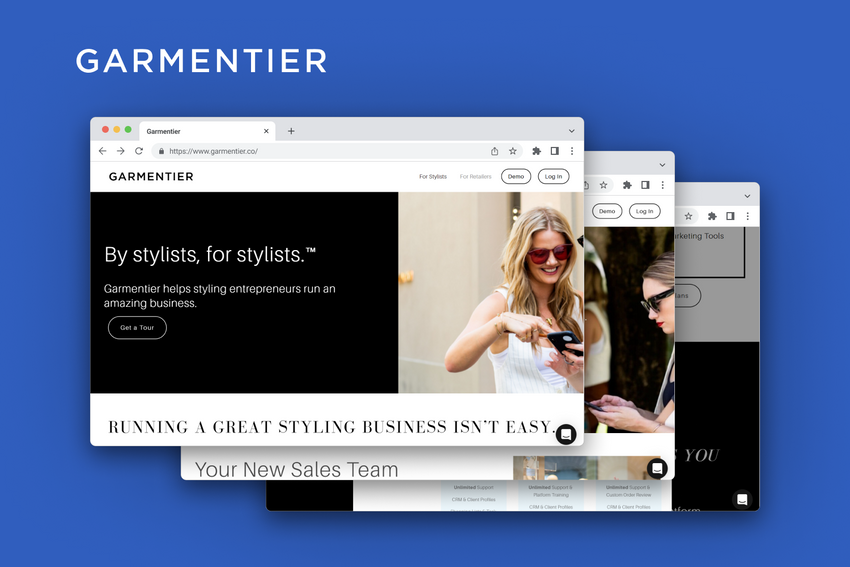AI Recommendation Engine: What Is It, How It Works, and How You Can Use It
Discover what is an AI recommendation engine, how it works, and how you can implement it into your software applications to improve your customer experience and KPIs.
On the verge of 2024, personalization is not just a luxury - it's becoming a necessity for businesses and individuals alike. As we navigate through vast oceans of online content and products, Recommendation Engines emerge as vital navigators, guiding us to our areas of interest.
These engines, powered by sophisticated Artificial Intelligence algorithms, are revolutionizing how we discover, interact with, and consume digital content and products. In this article, we're going to uncover what Recommendation Engines are, unravel how they work, and explore how businesses and consumers alike can harness their power to enhance user experience and drive engagement. Are you ready? Let’s start!
What Is an AI-Based Recommendation System?
At its core, an AI-based recommendation system is a sophisticated tool that analyzes data to suggest relevant items to users. These systems are the driving force behind the "You might also like" sections we encounter across various digital platforms, whether it be in online shopping, streaming services, or social media.
From a technical standpoint, these systems leverage machine learning algorithms to sift through large datasets. They identify patterns, preferences, and behaviors of users to predict what might interest them next. These algorithms can range from simple rule-based engines to complex neural networks that learn and evolve with each user interaction. They analyze past behavior, consider similar user profiles, and sometimes even incorporate external data to make their suggestions as relevant as possible.
In essence, AI-based recommendation systems are like digital matchmakers, connecting users with the content or products that align with their interests and preferences, enhancing their overall digital experience.
Types of Recommendation Engines
Now, let’s discover various types of recommendation systems, and dive into the core purposes of why are they used in business.
Collaborative Filtering Systems
Collaborative filtering systems stand out as a key type of such systems. They function on the principle of collective user preferences. The 'filtering' aspect comes into play as these systems sift through items to recommend, while the 'collaborative' part highlights the reliance on aggregated user behavior data.
The core mechanism of collaborative filtering involves analyzing patterns in user behavior and preferences, based on their past interactions with items. For instance, the system might look at the history of movies a user has watched and rated highly. It then compares this data with the preferences of other users who have shown similar tastes. The algorithm uses this information to predict and suggest new movies that these like-minded users enjoyed but the original user hasn’t seen yet.
In essence, collaborative filtering assumes that if two users agreed on their liking or disliking of certain items in the past, they are likely to have similar tastes in the future as well. This approach leverages the power of collective user data to make personalized recommendations, thereby enhancing user experience by suggesting items that are more likely to resonate with their interests.
Content-Based Filtering Systems
Content-based artificial intelligence recommendation engines form another pivotal category, distinguished by their unique approach of focusing on the attributes of items themselves. Unlike collaborative filtering, content filtering hinges on the features or characteristics of items to suggest other similar options tailored to a user's preferences.
The essence of a content-based system lies in its ability to analyze and utilize item-specific details. For instance, it might consider a user's age, the genre of movies they prefer, or the type of cuisine they enjoy at a restaurant. By understanding these specifics, the system can effectively model the likelihood of a user's future interactions with similar items.
For example, in the realm of movie recommendations, if a user shows a preference for romantic comedies like "You’ve Got Mail" and "Sleepless in Seattle," the system will likely suggest similar genre films or movies featuring the same actors, such as "Joe Versus the Volcano." This method ensures that recommendations are closely aligned with the user's demonstrated interests, based on the attributes of the items they have interacted with.
Content-based systems excel in providing highly relevant recommendations by delving into the intricacies of item features, ensuring users receive suggestions that closely mirror their established preferences and interests.
Knowledge-Based Systems
Knowledge-based systems in AI recommendation engines diverge significantly from content-based and collaborative filtering systems. These systems primarily rely on explicit knowledge about users and items, rather than inferring preferences from user behavior or item characteristics.
At the core of a Knowledge-Based System is its reliance on specific, detailed information. This might include explicit requirements or constraints specified by the user, or particular features of the items. The system uses this detailed knowledge to match users with items that explicitly meet their stated needs or preferences, rather than predicting preferences based on past behavior.
For instance, in a travel recommendation scenario, a user might specify certain criteria such as budget constraints, desired travel dates, or specific hotels. However, creating such a system is not easy, as it is meant to be used in complex domains where items are infrequently purchased or hence, data is lacking.
Hybrid Recommendation Systems
Hybrid Recommendation Systems represent an advanced approach in recommendation technology, ingeniously merging the strengths of various systems to provide more accurate and personalized user recommendations.
The essence of Hybrid Systems lies in their versatility and adaptability, achieved through parallel or sequential designs. In a parallel design, several recommendation engines operate simultaneously, each offering its insights. These individual outputs are then amalgamated into a comprehensive, final recommendation. On the other hand, the sequential design adopts a relay approach where the output of one recommender is fed into another, progressively refining the recommendations.
The key advantage of Hybrid Systems is their ability to balance and blend different recommendation strategies. A prime example of this approach in action is Netflix, which skillfully combines collaborative filtering and content-based methods, delivering movie suggestions that are not only aligned with a user's viewing history but also resonate with the intrinsic qualities of the films themselves.
How Does an AI-Powered Recommendation System Work?
But how all this is possible, how this magic actually works? Let’s discover the principles of recommendation systems work, taking it step by step.
Step 1: Collecting Data
The cornerstone of any artificial intelligence recommendation engine is its ability to gather and interpret user data, a process that blends both explicit and implicit data collection methods.
Explicit data collection is straightforward and user-driven. It involves direct prompts where users are asked to rate objects, rank them, choose between pairs, or list their preferences. Such methods are invaluable for gathering clear-cut, subjective data straight from the user's perspective.
Implicit data collection, on the other hand, operates more subtly. This involves tracking and analyzing user behavior online, like what they search for and view in online stores, or even monitoring the contents of their computer. It extends to understanding a user's digital footprint across social networks and identifying likes, dislikes, and behavioral patterns.
This combination of explicit and implicit data gathering forms a comprehensive dataset. The system uses this rich, layered information to deliver increasingly relevant recommendations, which in turn, heightens user engagement and interest. It’s a dynamic process where the more the system learns about a user, the more refined and tailored the recommendations become.
Step 2: Accumulating Data
In recommendation systems, data is the fuel that powers the engine of suggestions and preferences. As the volume of this data swells, the quality of the recommendations correspondingly improves, often transforming these projects into extensive big data ventures.
The nature of data collated is a critical factor in steering the choice of storage solutions. Depending on the data's characteristics – be it structured or unstructured – and considering aspects like ease of access, storage capacity, integration capabilities, and data transferability, the storage type can range from NoSQL databases to conventional SQL databases or even versatile object storage systems.
For instance, when it comes to storing user-generated content like ratings or comments, the key is to utilize a scalable and efficiently managed database system. This approach reduces the administrative overhead and allows the focus to remain on refining the recommendation logic.
Cloud SQL emerges as a prominent choice here. It stands out for its ability to streamline data import processes from Spark and offers the flexibility to opt for PostgreSQL, MySQL, or SQL Server. This adaptability is particularly advantageous for entities with specific data handling needs, ensuring that the database structure aligns seamlessly with the organizational requirements and enhances the overall efficacy of the recommendation system.
Step 3: Analyzing Data
In the intricate process of data analysis for recommendation systems, the urgency, and methodology of analysis are pivotal. This segmentation not only influences the system's design but also shapes the user experience. Let's delve into the different types of AI recommendation algorithms based on their response times:
- Real-time analysis: This is where immediacy is paramount. In scenarios where recommendations need to be as instant as the data generation, real-time analysis systems come into play. They're engineered to deliver suggestions in the blink of an eye, ensuring that users receive recommendations the moment they interact with the system.
- Near-real-time analysis: A step away from the immediacy of real-time systems, these are designed for situations where promptness is key, but a slight delay is acceptable. A classic example is Netflix's recommendation engine. With its vast and continuously expanding catalog, providing tailored content suggestions to viewers in near real time is crucial for a personalized and engaging viewing experience.
- Batch analysis: This approach takes a more measured pace, often taking hours or even days to process data. It's suited for situations where the accumulation of substantial data is necessary before making recommendations. For instance, batch analysis might be employed to curate personalized daily email newsletters, waiting to gather enough user interaction data before sending out suggestions.
Each of these systems serves a unique purpose and is chosen based on the specific needs of the application and its users. The choice reflects a balance between the immediacy of the recommendation and the depth of data analysis required to provide meaningful and accurate suggestions.
Step 4: Filtering Data
Navigating the intricate world of data filtering in recommendation systems is akin to finding a needle in a haystack – it's about pinpointing the exact pieces of data that will resonate with each individual user. Here's a closer look at how this process unfolds:
Choosing the right algorithm: The crux of effective data filtering lies in selecting an algorithm that aligns with the engine's goals. Whether it's content-based, cluster-based, or collaborative filtering, each algorithm offers a unique approach to recommendations. Content-based filtering zeroes in on items resembling a user's past preferences, while cluster filtering groups complementary products together. Collaborative filtering, on the other hand, leverages user similarities, banking on the idea that users with shared past interests will likely have common future preferences.
Matrix representation for ratings and interactions: To efficiently manage the data, we often use matrices with products and users as the two axes. This setup allows us to apply advanced algorithms like K-Nearest Neighbors, Jaccard’s coefficient, Dijkstra’s algorithm, or cosine similarity. These algorithms are instrumental in drawing connections between users based on their interactions and ratings, offering a structured and analytical approach to understanding user behavior
Timely delivery of recommendations: The final step in this filtering odyssey is deciding when and how to present these tailored suggestions. It could be a real-time recommendation popping up as users browse, or a carefully curated email sent out at a later time. The timing is as crucial as the recommendation itself, ensuring that users receive these insights precisely when they're most receptive.
Filtering data in recommendation systems is a delicate balance of precision, timing, and understanding user behavior. It's about sifting through vast amounts of data to find those golden nuggets of information that will most appeal to each user, enhancing their experience and guiding their choices.
Benefits of AI Recommendation Engines
The landscape of digital interaction has forever changed with the advent of AI recommender systems. These powerful tools are reshaping how users engage with platforms, enhancing both their experience and the business's bottom line.
Here's a glimpse into the multifaceted benefits they offer:
- Deliver relevant content: At the heart of recommendation engines lies their ability to sift through mountains of data and present content that's not just relevant but often surprisingly spot on. This relevance is key in keeping users engaged and interested.
- Meet customer experience expectations: Today's digital users expect a tailored experience. Recommender systems meet these expectations by learning from user behaviors and preferences, delivering a customized user journey every time.
- Personalization enhances experience: Imagine a world where every digital interaction feels like it's made just for you. That's what recommendation engines do - they show users new content based on individual preferences, making every visit feel uniquely personal.
- Aid the undecided customer: For users unsure of what they want, these engines are like knowledgeable guides, suggesting options and helping navigate the vast array of choices, thereby simplifying the decision-making process.
- Increase the visibility of appealing items: By highlighting items that might interest the user, recommendation engines significantly boost the chances of users discovering new favorites they didn't even know they were looking for.
- Boost order value and profit margin: It's not just about engagement; these engines also have a direct impact on the bottom line. Suggesting additional, relevant items, often leads to larger orders and, consequently, higher profits.
- Personalized marketing tools: These engines power personalized newsletters, ads, and push notifications, re-engaging users, increasing repeat visits, and reducing churn. It's a strategy that turns occasional visitors into loyal customers.
AI recommendation engines are more than just a feature; they're a transformative force in the digital world, offering a symbiotic benefit to both businesses and users. They represent a leap towards a more intuitive, responsive, and personal digital experience, marking a significant milestone in the journey of digital innovation.
Top Use Cases of AI-Based Recommendation Systems
As we can see, from enhancing user experience to optimizing business operations, these systems are becoming indispensable in multiple domains. Let’s explore some of the key sectors where AI-based recommendation systems are making a significant impact:
- Supply chain management: Recommendation systems in supply chain management help predict demand and optimize inventory levels, leading to more efficient operations and reduced costs.
- E-Commerce: In the realm of online shopping, these systems personalize the shopping experience, suggesting products based on the user's browsing and purchase history, significantly boosting sales and customer loyalty.
- Media and entertainment: For media platforms, recommendations are crucial in suggesting movies, shows, or music, keeping users engaged and increasing platform stickiness.
- Social media: These systems help curate personalized feeds on social media platforms, showing users content that aligns with their interests and interactions, thus enhancing user engagement.
- Healthcare: In healthcare, AI-driven recommendations can assist in diagnosing diseases, recommending treatment plans, and even suggesting lifestyle changes for better health outcomes.
- Financial services: Recommendation systems in financial services offer personalized financial advice, and product recommendations, and can even aid in fraud detection and risk management.
- Travel and hospitality: For the travel and hospitality sector, these systems personalize travel recommendations, hotel bookings, and itineraries based on user preferences, enhancing the overall customer experience.

The utilization of AI-based recommendation systems is revolutionizing how industries interact with their customers and manage their internal processes. By leveraging these systems, businesses are not only enhancing user experiences but also driving innovation and efficiency in their operations.
Wrapping Up
As we've navigated through the intricate world of AI-based recommendation engines, it's clear that they have long ago become more than just a technological novelty. These sophisticated systems are reshaping the landscape of numerous industries, from e-commerce to healthcare, by providing personalized experiences and driving efficient decision-making. Their ability to analyze vast amounts of data and discern patterns is pivotal in delivering content and services that resonate with individual preferences and needs.
In 2024 and beyond, the role of AI in crafting these tailored experiences will only become more pronounced. Whether it's helping users discover their next favorite product, movie, or travel destination, or aiding businesses in supply chain management and customer engagement, AI recommendation engines are at the forefront of digital transformation. They stand as a testament to the power of AI in enhancing not just business operations but also the everyday experiences of consumers worldwide.
As technology continues to evolve, it’s exciting to anticipate how AI will further innovate and refine the capabilities of recommendation engines. If you want to explore and utilize AI to boost your business growth and unfold new horizons of your customers' experience, don’t hesitate to contact us, and we’ll help to turn your dream app project into reality! Let’s fly into the future!

Need Help With A Project?
Drop us a line, let’s arrange a discussion















